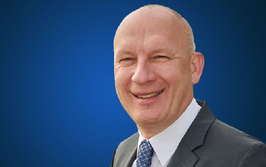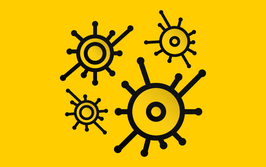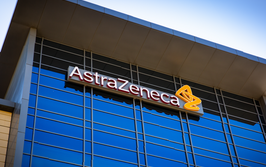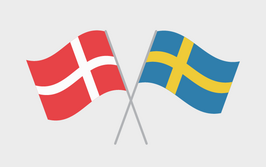
C&G Therapy? That’ll Do NICEly
The striking combination of remarkable, long-lasting, clinical effectiveness and a hefty price tag presents a real challenge to health technology assessors considering cell and gene therapies. Nick Crabb explains how the UK’s health technology assessment agency, NICE, is tackling the problem.
The pipeline for advanced therapy medicinal products (ATMPs) is strong and the field has major potential for patients. NICE (The National Institute for Health and Care Excellence) in the UK wants to make sure patients have access to these remarkable therapies. But there are some major challenges to overcome to make that a reality. The first is working out how to pay for these therapies. The second is timely access for patients while evidence is still emerging, which it so often is for cell and gene therapies.
Nick Crabb, Programme Director, Scientific Affairs, NICE, UK, explains that there is a trend in Europe towards developing policies that increase the speed at which new products come to NICE and other health technology assessment agencies (HTAs) so that they are referred sooner in their development cycle, and with less evidence, with the aim of getting them to patients faster. “In England, this includes the accelerated access review and changes to the Cancer Drugs Fund in 2015,” says Crabb. “UK-wide changes include the development of the regenerative medicine Expert Group, which has helped with UK preparations for cell and gene therapies coming to market, and the Early Access to Medicines Scheme,” says Crabb. “Early access to medicines is something we have focused on managing.”
The English Example
The high costs associated with ATMPs has forced HTAs to think differently about medicines. In 2017, NICE made changes to its technology appraisal framework intended to support financial sustainability. “At NICE, we use a cost-effectiveness framework where we capture the benefits to patients in quality adjusted life years (QALYs),” says Crabb. “But in 2017, we also introduced a budget impact test to support the sustainable introduction of new products. New medicines and technologies with a net budget impact of more than £20 million per annum in the first three years of implementation may now be subject to commercial negotiations with NHS England, in addition to NICE cost-effectiveness analyses.”
The aim behind the approach is to tackle the cost challenges – despite the benefits offered by some medicines the cost is simply too great for many government-funded healthcare systems. “In 2017, we also introduced a cost effectiveness threshold in our Highly Specialised Technologies Programme for the first time. The applicable threshold depends on the magnitude of individual patient benefit and is in the range £100,000 - £300,000 per QALY,” says Crabb.
The combination of low evidence and high cost, however, has also presented other challenges to agencies like NICE. “There are a number of developments that we may see, including wider use of managed access arrangements to achieve equitable sharing of risks across stakeholders, post-marketing authorization ‘real world’ evidence collection to reduce uncertainty with time, greater emphasis on ‘recommended with research’ type recommendations in HTA/payer decision frameworks, and innovative pricing and reimbursement models.” adds Crabb.
In collaboration with the University of York, NICE has also been testing the applicability of its own methods and decision-making framework for disruptive technologies like ATMPs. “We developed multiple scenarios and put them in front of an expert panel experienced in NICE technology assessment. They were asked what decisions they would make if the scenarios were encountered in real appraisals,” explains Crabb.
NICE wanted to explore the interplay between evidence maturity, price and payment methods. The hypothetical product chosen was a CD19 CAR-T cell therapy for treating relapsed or refractory B-cell acute lymphoblastic leukaemia (B-ALL) in children and young adults (this was done prior to the first FDA or EMA approvals). Based on a couple of small academic studies, the team developed two target product profiles (TPPs): a CAR T-cell therapy used “as a bridge” to hematopoietic stem cell transplantation (HSCT) and a CAR T-cell therapy used with “curative intent.” To explore the impact of different levels of evidence, three hypothetical evidence sets were constructed for each TPP (minimum, intermediate, mature) providing six evidence scenarios. Within each of the six evidence sets, cost effectiveness analyses explored the impact of price discounts, payment models and discounting rates used in the economic analyses.
“We found that the NICE appraisal methods and decision frameworks are fundamentally applicable to regenerative medicines and cell therapies,” says Crabb. “The work that the University of York did in quantifying and presenting clinical outcomes and decision uncertainty was key to the expert panel’s consideration of the hypothetical example products. Crucially, the study revealed that where there is a combination of high cost, great uncertainty, but potentially very substantial patient benefits, innovative payment methods need to be developed to manage and share risk to facilitate timely patient access while evidence is immature.”
The study also found that the discounting rate applied to costs and benefits was found to have a very significant impact on the health economic analyses of these types of technologies. This potentially means that if you discount too much, the fact that a product delivers benefit over a prolonged period means you end up weighing the evidence too far in favor of cost.
Since early 2016, NICE has issued guidance for a number of ATMPs. “These include Holoclar for treating limbal stem cell deficiency after eye burns, autologous chondrocyte implantation for treating symptomatic articular cartilage defects of the knee, and Strimvelis for treating adenosine deaminase deficiency–severe combined immunodeficiency,” says Crabb. “NICE has also recommended tisagenlecleucel (Kymriah) for diffuse large B-cell lymphoma (DLBCL) and relapsed or refractory B-cell acute lymphoblastic leukaemia in people aged up to 25 years; as well as Axicabtagene ciloleucel (Yescarta) for treating DLBCL and primary mediastinal large B-cell lymphoma after two or more systemic therapies.”
Developments at NICE show that patient access for these important, yet often expensive, therapies is becoming a reality.

Over the course of my Biomedical Sciences degree it dawned on me that my goal of becoming a scientist didn’t quite mesh with my lack of affinity for lab work. Thinking on my decision to pursue biology rather than English at age 15 – despite an aptitude for the latter – I realized that science writing was a way to combine what I loved with what I was good at.
From there I set out to gather as much freelancing experience as I could, spending 2 years developing scientific content for International Innovation, before completing an MSc in Science Communication. After gaining invaluable experience in supporting the communications efforts of CERN and IN-PART, I joined Texere – where I am focused on producing consistently engaging, cutting-edge and innovative content for our specialist audiences around the world.



















